
Introducing Girard-Perregaux Unveils the “Baguette Diamond” and “Sapphire Gradient” Editions
Welcome to the hub of the horoloy
The Vacheron Constantin Les Cabinotiers Berkley Grand Complication

Vacheron Constantin, the historic Swiss watchmaker, holds the record for crafting the most complicated watch ever made, unveiled at last year’s Watches & Wonders. This horological masterpiece, featuring an astonishing 63 complications and 2,877 components, surpasses the record previously held by the Maison’s own Reference 57260. Introduced in 2015 to commemorate the brand’s 260th anniversary, the Reference 57260 was a bespoke creation commissioned by a secretive collector known as "Berkley." This same patron inspired and lent his name to the latest marvel: Les Cabinotiers ,The Berkley Grand Complication.

Creating the most complicated watch in history is not merely a technical feat, it is an art form that Vacheron Constantin has refined since its founding in 1755. Over two and a half centuries of uninterrupted watchmaking heritage have solidified the Maison’s commitment to pushing the boundaries of horological innovation.
 |  |
The creation of the Berkley Grand Complication demanded unparalleled expertise, with a team of three master watchmakers dedicating an extraordinary 11 years to its development. Remarkably, an entire year was devoted solely to the intricate process of assembly, a testament to the precision and craftsmanship required to bring this masterpiece to life.
 The term cabinotier, dating back to the 18th century, refers to the watchmakers who crafted timepieces in the "cabinets" of Geneva’s top-floor ateliers. Today, it is synonymous with Vacheron Constantin’s bespoke department, Les Cabinotiers, widely regarded as one of the most innovative and capable custom watchmaking ateliers in existence. As the world’s oldest continuously operating watch manufacturer, this distinction underscores the Maison’s unparalleled expertise.
The term cabinotier, dating back to the 18th century, refers to the watchmakers who crafted timepieces in the "cabinets" of Geneva’s top-floor ateliers. Today, it is synonymous with Vacheron Constantin’s bespoke department, Les Cabinotiers, widely regarded as one of the most innovative and capable custom watchmaking ateliers in existence. As the world’s oldest continuously operating watch manufacturer, this distinction underscores the Maison’s unparalleled expertise.
 The Berkley Grand Complication, crafted by Les Cabinotiers, is housed in an elegant 18k white gold case measuring 98mm in diameter and 50.55mm in thickness. The case features polished bezels on both sides, with a sapphire crystal aperture on the case middle, offering a view of the crown’s position during winding or time-setting.
The Berkley Grand Complication, crafted by Les Cabinotiers, is housed in an elegant 18k white gold case measuring 98mm in diameter and 50.55mm in thickness. The case features polished bezels on both sides, with a sapphire crystal aperture on the case middle, offering a view of the crown’s position during winding or time-setting.
 The front dial is a symphony of finishes: the main opaline silver-toned dial is complemented by auxiliary subdials adorned with a sunray finish. The reverse dial mirrors the opaline hue, maintaining the watch’s cohesive aesthetic.
The front dial is a symphony of finishes: the main opaline silver-toned dial is complemented by auxiliary subdials adorned with a sunray finish. The reverse dial mirrors the opaline hue, maintaining the watch’s cohesive aesthetic.
One of the watch’s standout features is its Chinese perpetual calendar, a world-first in mechanical watchmaking. This complication, designed to run seamlessly until the year 2200, presented unique technical challenges. The Chinese calendar’s irregularities required the development of sophisticated algorithms to translate its complex lunar cycles into mechanical form. According to Vacheron Constantin, the calendar is powered by three mechanical mechanisms that display the lunar year’s date over a 19-year cycle, a feat of engineering that underscores the Maison’s technical prowess.

The time display adopts a regulator style, featuring a day/night indicator at 1 o’clock on the front and a 60-hour power reserve indicator at 3 o’clock. In this model, the hour hand, positioned at 12 o’clock on the front, operates independently from the central minute hand and the seconds hand, which is located at 6 o’clock. To enhance this arrangement, the watchmakers at Les Cabinotiers incorporated a retrograde seconds hand. Given the watch’s emphasis on precision, they equipped the retrograde mechanism with an advanced solution: two cams that compensate for the time it takes the seconds hand to return to the "0" position.
 The chronograph, accurate to the nearest fifth of a second due to the movement’s 2.5 Hz cadence, includes a split-seconds function. This feature enables the measurement of intermediate times by halting the central sweep-seconds hand. Once restarted, the hand "catches up" (a function known as rattrapante) with the first hand, resynchronizing with the elapsed time. Unlike the Reference 57260, which incorporates a chronograph with two retrograde seconds hands, this model opts for a more traditional configuration, with both seconds hands rotating in the same direction.
The chronograph, accurate to the nearest fifth of a second due to the movement’s 2.5 Hz cadence, includes a split-seconds function. This feature enables the measurement of intermediate times by halting the central sweep-seconds hand. Once restarted, the hand "catches up" (a function known as rattrapante) with the first hand, resynchronizing with the elapsed time. Unlike the Reference 57260, which incorporates a chronograph with two retrograde seconds hands, this model opts for a more traditional configuration, with both seconds hands rotating in the same direction.
 The chronograph mechanism, integrated into the movement’s secondary system on the front, is controlled by three column wheels and a horizontal clutch, activated via the pushpiece within the crown. An additional pusher, embedded in the case middle at 11 o’clock, restarts the split-seconds hand. The chronograph hours and minutes are displayed on their respective counters at 3 o’clock (hours) and 9 o’clock (minutes), both featuring a silver-toned finish. On the front, time indications are rendered in blue, while the Chinese calendar and chiming functions are highlighted in golden tones.
The chronograph mechanism, integrated into the movement’s secondary system on the front, is controlled by three column wheels and a horizontal clutch, activated via the pushpiece within the crown. An additional pusher, embedded in the case middle at 11 o’clock, restarts the split-seconds hand. The chronograph hours and minutes are displayed on their respective counters at 3 o’clock (hours) and 9 o’clock (minutes), both featuring a silver-toned finish. On the front, time indications are rendered in blue, while the Chinese calendar and chiming functions are highlighted in golden tones.
 The front of the watch is primarily dedicated to the traditional Chinese calendar’s intricate displays. To navigate these indications, one must first identify whether the current year is normal or embolismic (indicated by an aperture at 11 o’clock) and whether the lunar month is short or long (shown at 12 o’clock on the fixed New Year disc). This perpetual calendar, with indications in Chinese characters, includes a pointer-type date display at the 6 o’clock counter and aperture-style displays for the day at 8 o’clock and the month at 4 o’clock.
The front of the watch is primarily dedicated to the traditional Chinese calendar’s intricate displays. To navigate these indications, one must first identify whether the current year is normal or embolismic (indicated by an aperture at 11 o’clock) and whether the lunar month is short or long (shown at 12 o’clock on the fixed New Year disc). This perpetual calendar, with indications in Chinese characters, includes a pointer-type date display at the 6 o’clock counter and aperture-style displays for the day at 8 o’clock and the month at 4 o’clock.
The watchmakers have also incorporated a jumping display of the 10 celestial stems, complete with their yin-yang polarities and associated elements, visible on the 9 o’clock counter. The 3 o’clock counter showcases the 12 earthly branches linked to the double hours, with each day divided into 12 two-hour segments starting at 11 o’clock. This display operates continuously over a 24-hour cycle. Finally, the silhouette of the Chinese zodiac animal for the current year is revealed through an aperture positioned beneath the moon phases. The combination of the zodiac animal and the celestial stem, as indicated on the New Year disc, determines the year’s position within the sexagesimal cycle.
As an integral component of this Chinese perpetual calendar, the precision moon phases and age of the moon are displayed on the 12 o’clock counter, requiring no adjustments for an impressive 1,027 years. Another distinctive feature is the caseback display, where a central hand indicates the agricultural year’s 24 solar periods, alongside the month lengths, seasons, solstices, and equinoxes.

On the watch’s reverse side, the Gregorian perpetual calendar is showcased, driven by one of the movement’s two additional caseback mechanisms. This display includes a retrograde date at 12 o’clock, complemented by the day of the week at 9 o’clock, the month at 3 o’clock, and the leap-year cycle in a 1 o’clock aperture. Additionally, the calendar week number (1 to 52) is indicated by a hand at 3 o’clock, with the corresponding day number (1 to 7) shown in an aperture positioned above it.
The watch’s astronomical features extend beyond its calendar functions. On the back, integrated into the movement’s secondary mechanism, is a sky chart depicting constellations in real time as observed from Shanghai.

The equation of time further enhances the astronomical indications. Due to the elliptical nature of Earth’s orbit and the 24° tilt of its axis, the interval between two solar zenith passages varies throughout the year. This difference between the true solar day and the mean 24-hour civil day ranges from -16 to +14 minutes, reaching zero only four times annually, at the solstices and equinoxes. This data, referred to as the equation of time or time correction in astronomical terms, is calculated using a cam that governs the display of this time differential. The Earth’s revolution around the Sun also determines the length of day and night, with counters at 5 o’clock and 7 o’clock displaying sunrise and sunset times, as well as the duration of day and night, all calibrated for Shanghai’s geographical location.
 The watchmakers at Vacheron Constantin equipped the Calibre 3752 with a Grande Sonnerie mechanism featuring a Westminster carillon. This mechanism reproduces the melody played by Big Ben’s bells in London’s Tower of Parliament, consisting of four bars of four notes at varying frequencies, with a fifth note marking the hours. The chime, produced by five hammers and five gongs, can be activated at any time using the minute repeater lever located on the case middle at 6 o’clock.
The watchmakers at Vacheron Constantin equipped the Calibre 3752 with a Grande Sonnerie mechanism featuring a Westminster carillon. This mechanism reproduces the melody played by Big Ben’s bells in London’s Tower of Parliament, consisting of four bars of four notes at varying frequencies, with a fifth note marking the hours. The chime, produced by five hammers and five gongs, can be activated at any time using the minute repeater lever located on the case middle at 6 o’clock.
In "Striking" mode, indicated by a pointer-type selector at 10 o’clock on the front, the watch automatically chimes at each quarter-hour, functioning like a traditional clock. In "Night" mode, the alarm is deactivated during a customer-defined time slot, typically between 10 p.m. and 8 a.m., conserving energy and ensuring quiet at night. The final mode, "Silence," completely disables the striking mechanism. A second selector, coaxial with the first, allows the user to toggle between Grande Sonnerie and Petite Sonnerie modes. This striking mechanism operates with its own barrel, featuring a pointer-type power reserve indicator at 9 o’clock.

The striking mechanism is further enhanced by an integrated alarm, activated via a dedicated slide on the case middle at 1 o’clock. The alarm time is set using the crown, with the alarm hour displayed by a hand coaxial to the main time hour hand (at 12 o’clock on the front). The alarm has its own energy source, powered by a separate barrel wound via a crown positioned at 5 o’clock—a subtle technical innovation. The alarm’s torque is displayed on the same counter as the mode indicator at 1 o’clock. In "Normal" mode, the alarm progressively chimes on a dedicated gong struck by a sixth hammer. In "Carillon" mode, the alarm activates the Big Ben chime, sounding in either Grande Sonnerie or Petite Sonnerie mode. For safety, both the Grande Sonnerie and alarm mechanisms include systems that prevent striking when their respective barrels are depleted.
Balancing astronomical complexity with practical travel functionality, the watch also features a world-time display on its reverse side. A 10 o’clock aperture allows the selection of one of 24 cities representing the global time zones established at the 1884 International Meridian Conference in Washington. The selected city appears alongside its time offset from GMT, such as N.Y. GMT -5. Below this, a 9 o’clock counter displays the hours and minutes for a second time zone over a 12-hour period, complemented by a day/night indicator at 11 o’clock. The rotating disc used for day/night distinction is engraved with a polar azimuthal projection of the Northern Hemisphere, enabling the wearer to visualize global sunlight duration from the perspective of the second time zone.
At the heart of this masterpiece is the hand-wound Calibre 3752. Measuring 72mm in diameter and 36mm in thickness, this movement features a triple-axis tourbillon oscillating at a frequency of 2.5 Hz (18,000 vibrations per hour) with a 60-hour power reserve. The calibre is composed of 2,877 components, including 245 jewels.
One of the hallmarks of High Watchmaking at Vacheron Constantin is the meticulous hand-finishing of movement components. While these techniques demand exceptional expertise for a movement with around 150 components, the complexity is exponentially greater when working with 2,877 components. This intricate craftsmanship is hidden from view, as the double-sided watch features no openwork on the movement apart from the tourbillon aperture. Only when the watch is opened does the sheer scale of the task become evident. The three watchmakers responsible for this timepiece dedicated a year to its assembly and decoration.
Complications List
Time measurement (9)
1. Regulator-type hours, minutes and seconds for mean solar time
2. Retrograde second for mean solar time
3. Day and night indication for reference city
4. Visible spherical armillary tourbillon regulator with spherical balance spring
5. Armillary sphere tourbillon
6. World time indication for 24 cities
7. Second time zone hours and minutes (on 12 hours display)
8. Second time zone day and night indication
9. System to display the second time zone for the Northern or Southern hemispheres
Gregorian Perpetual Calendar (7)
10. Gregorian perpetual calendar
11. Gregorian days of the week
12. Gregorian months
13. Gregorian retrograde date
14. Leap-year indication and four-year cycle
15. Number of the day of the week (ISO 8601 calendar)
16. Indication for the number of the week within the year (ISO 8601 calendar)
Chinese Perpetual Calendar (11)
17. Chinese perpetual calendar
18. Chinese number of the day
19. Chinese name of the month
20. Chinese date indication
21. Chinese zodiac signs
22. 5 elements and 10 celestial stems
23. 12 earthly branches
24. Chinese year state (common or embolismic)
25. Month state (small or large)
26. Indication for the Golden number within the 19-year Metonic cycle
27. Indication for the date of the Chinese New Year in the Gregorian calendar
Chinese Agricultural Perpetual Calendar (2)
28. Chinese agricultural perpetual calendar
29. Indications of seasons, equinoxes and solstices with solar hand
Astronomical Indications (9)
30. Sky chart (calibrated for Shanghai)
31. Sidereal hours
32. Sidereal minutes
33. Sunrise time (calibrated for Shanghai)
34. Sunset time (calibrated for Shanghai)
35. Equation of time
36. Length of the day (calibrated for Shanghai)
37. Length of the night (calibrated for Shanghai)
38. Phases and age of the moon, one correction every 1027 years
Split-seconds Chronograph (4)
39. Fifths of a second chronograph (1 column wheel)
40. Fifths of a second split-second chronograph (1 column wheel)
41. 12-hour counter (1 column wheel)
42. 60-minute counter
Alarm (7)
43. Progressive alarm with single gong and hammer striking
44. Alarm strike / silence indicator
45. Choice of normal alarm or carillon striking alarm indicator
46. Alarm mechanism coupled to the carillon striking mechanism
47. Alarm striking with choice of grande or petite sonnerie
48. Alarm power-reserve indication
49. System to disengage the alarm barrel when fully wound
Westminster Carillon (8)
50. Carillon Westminster chiming with 5 gongs and 5 hammers
51. Grande sonnerie passing strike
52. Petite sonnerie passing strike
53. Minute repeating
54. Night silence feature (between 22.00 and 08.00 hours – hours chosen by the owner)
55. System to disengage the striking barrel when fully wound
56. Indication for grande or petite sonnerie modes
57. Indication for silence / striking / night modes
Additional features (6)
58. Power-reserve indication for the going train
59. Power-reserve indication for the striking train
60. Winding crown position indicator
61. Winding system for the double barrels
62. Hand-setting system with two positions and two directions
63. Concealed flush-fit winding crown for the alarm mechanism
For more information, visit Vacheron Constantin official website.

First Look Jaeger LeCoultre Unveils The Reverso Tribute Monoface Small Seconds
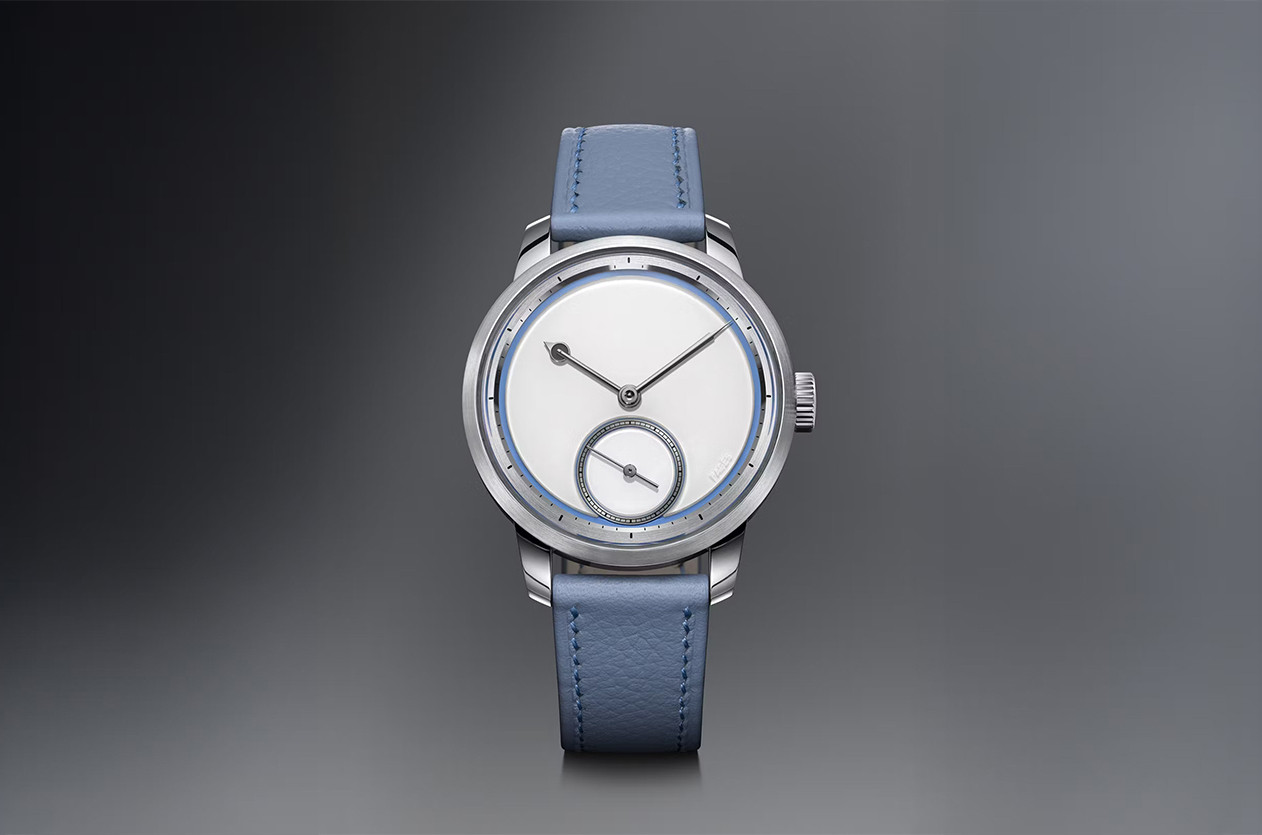
Introducing RP2: The Newest Masterpiece by Raúl Pagès

Introducing DB28GS Swordfish: The Luxury Dive Watch from De Bethune

Introducing Vacheron Constantin Traditionnelle Tourbillon Perpetual Calendar
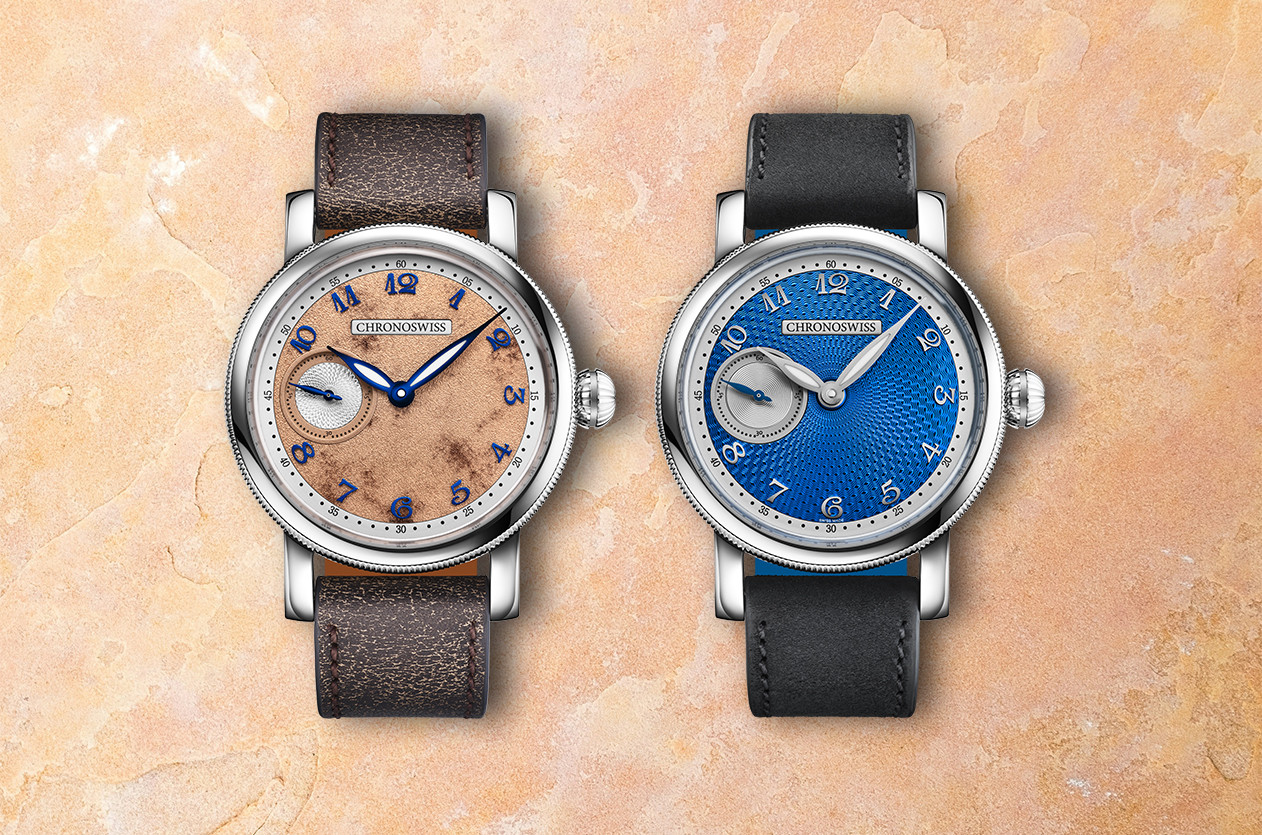
Introducing Chronoswiss Advances Steadily into a New Era with the Small Second
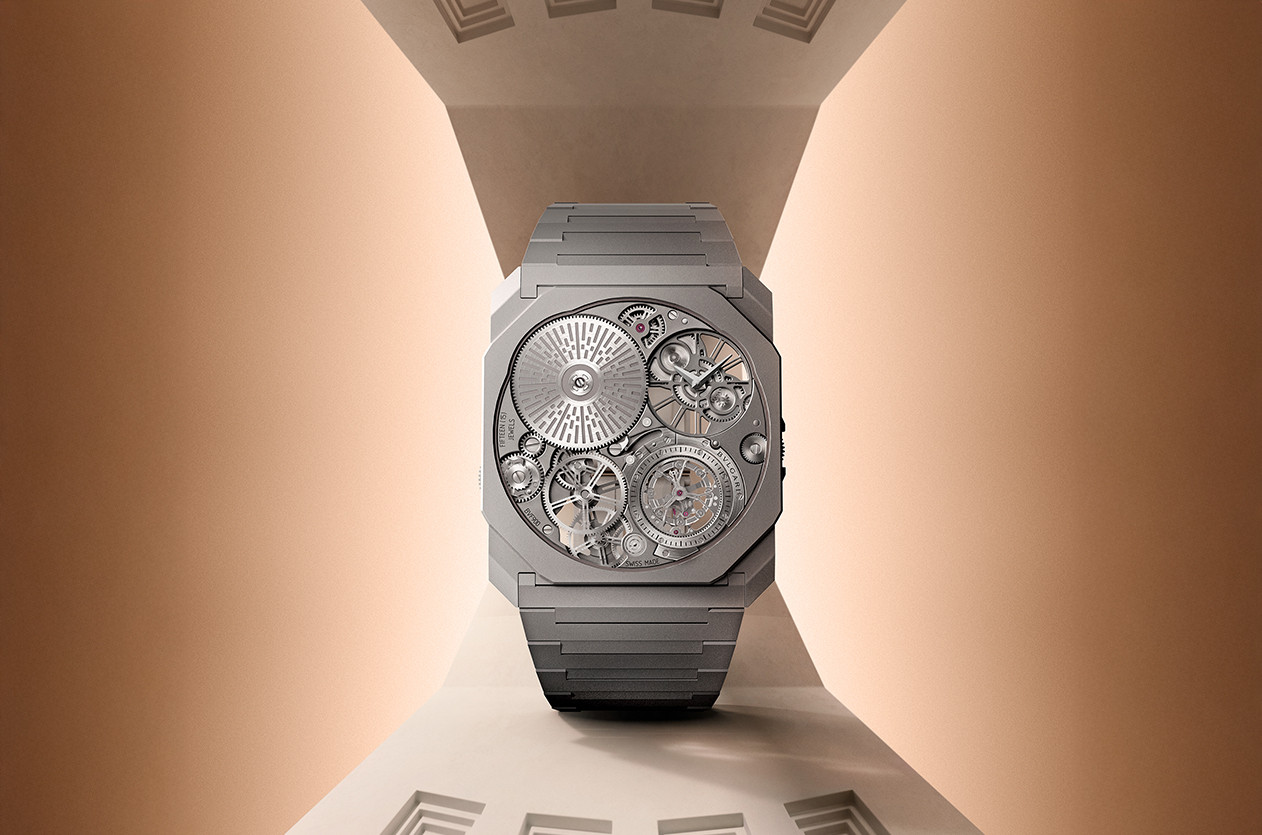
Introducing Bvlgari Shines Again with the World's Thinnest Tourbillon

Introducing Rolex Launches the Daytona 126518LN in Yellow Gold with a Turquoise blue Dial
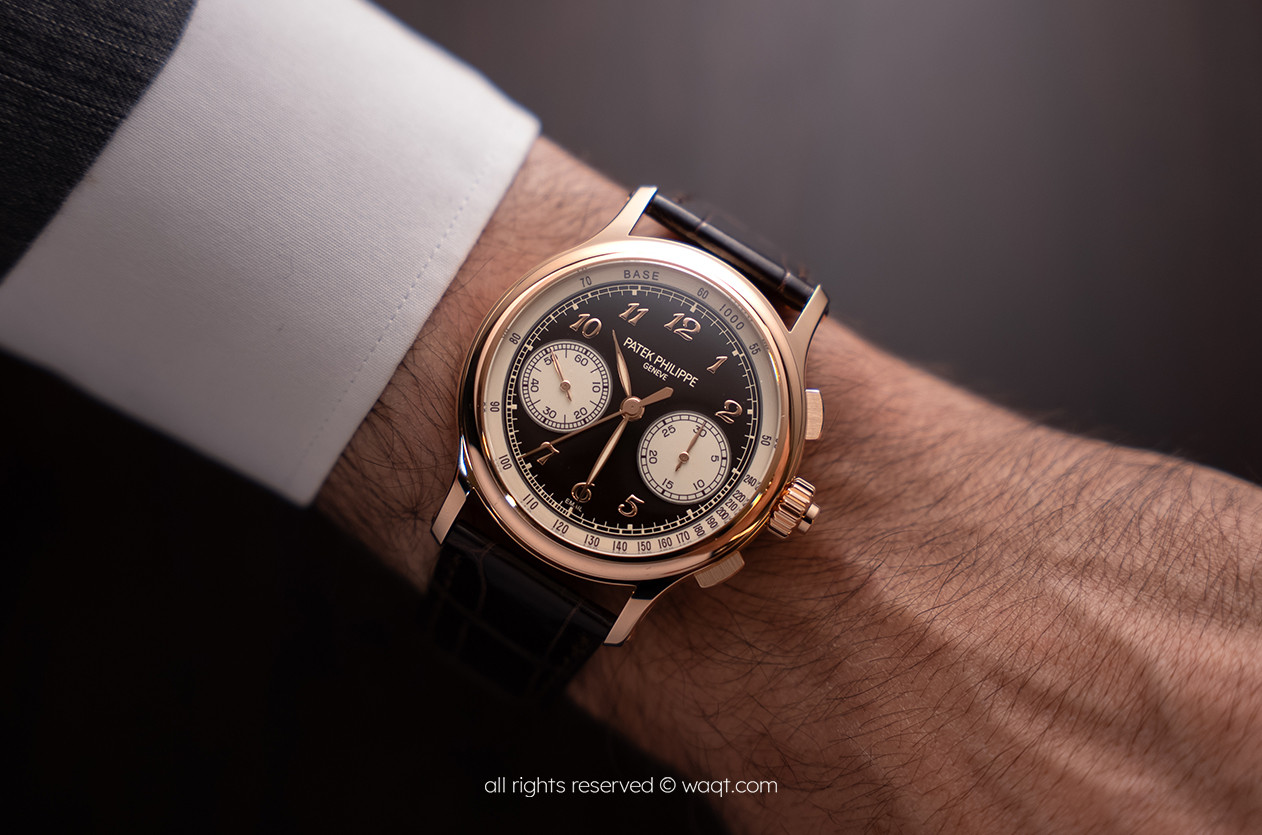
Hands on Patek Philippe Unveils the Split-Second Chronograph 5370R

Introducing A. Lange & Söhne Unveils the Minute Repeater Perpetual
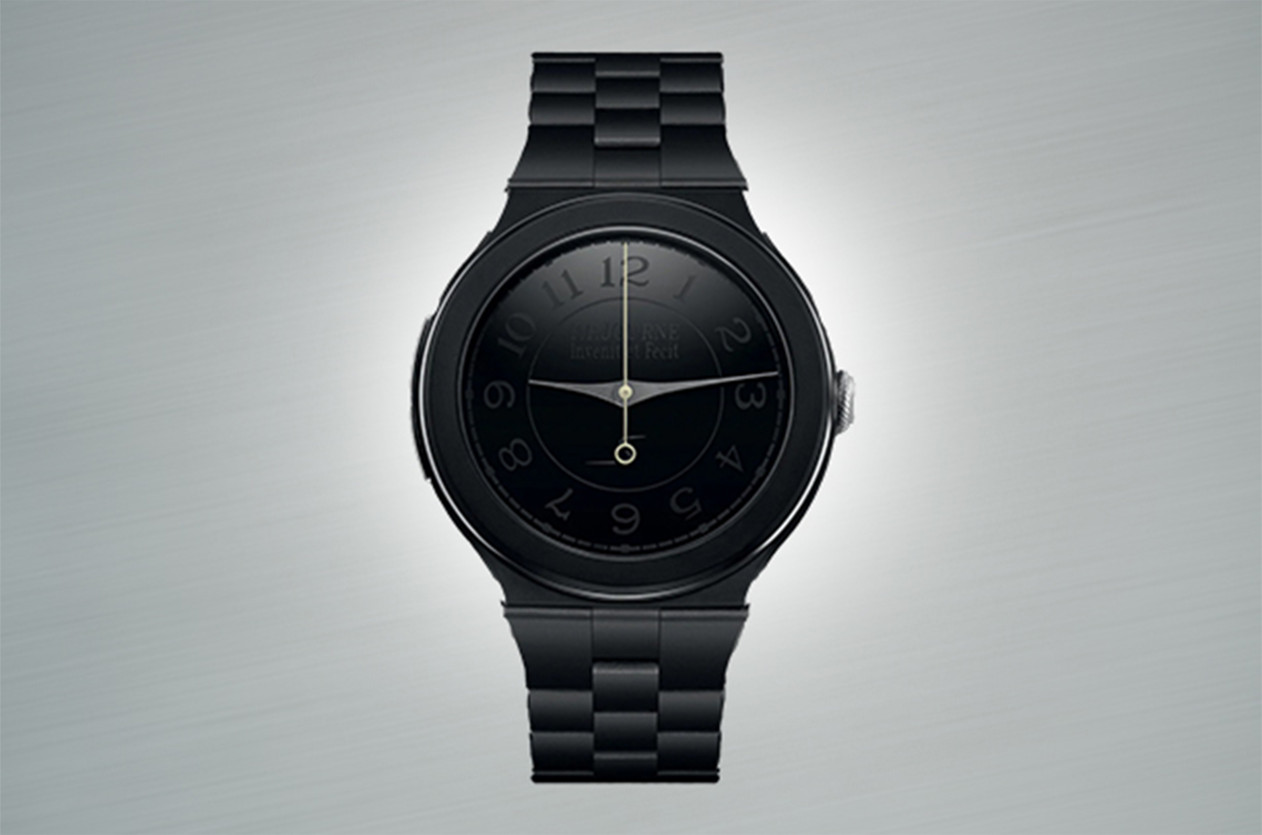
Introducing F.P.Journe Launches the Chronomètre Furtif with a Striking Tungsten Carbide Case

Introducing Gerald Charles Unveils the Maestro GC Sport Tennis Watch
Comment Delete Text
This page is available in English only. Please click below to visit Arabic Home page!